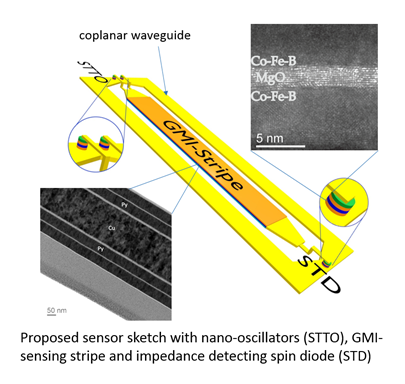Motivation
Magnetic field sensors have a wealth of applications in today’s technologies in various areas. Applications are as diverse as mobile phones, automobiles or hard disk data storages. For most of the applications a moderate sensitivity of, e.g., the order of the strength of earth’s magnetic field is sufficient. However, there are as well potential applications where a thousandfold higher sensitivity is desirable. In these applications weak magnetic fields have to be detected over relatively large distances. Among such applications are magnetocardiology, magnetoencephalography or geophysical explorations.
Very sensitive magnetic sensors are in principle available. Examples are flux gate sensors and SQUIDs. However, these sensors are fairly expensive and are not suitable for batch fabrication processes. The spinGMI project aims on developing a technology which ultimately permits the batch fabrication of ultrasensitive and low cost magnetic field sensors.
Goals and Approach
The aim of the spinGMI project is to develop chip-based magnetic field sensors utilizing the giant magnetoimpedance effect. The main basis are on-chip-integrated active and passive spintronic radio frequency tunneling elements. The field sensitivity of the complete device should be in the range of nT to pT field strength. The on-chip nanoelements drastically reduce the chip area with respect to today’s sensor devices. Layout and size of the chips are basically compatible with semiconductor batch fabrication processes.
Innovations and Perspectives
During the spin GMI project the magnetic field sensors will be optimized strictly according to the market needs in close collaboration with industrial partners. Since the giant magnetoimpedance effect is also highly susceptible to mechanical deformations, to temperature and to radio frequency radiation a whole family of multipurpose sensors may as well be developed. This, in turn, will enable highly sensitive, energy-efficient and cost-effective smart sensor architectures.

Further information:
https://www.elektronikforschung.de/projekte/formikro-spingmi